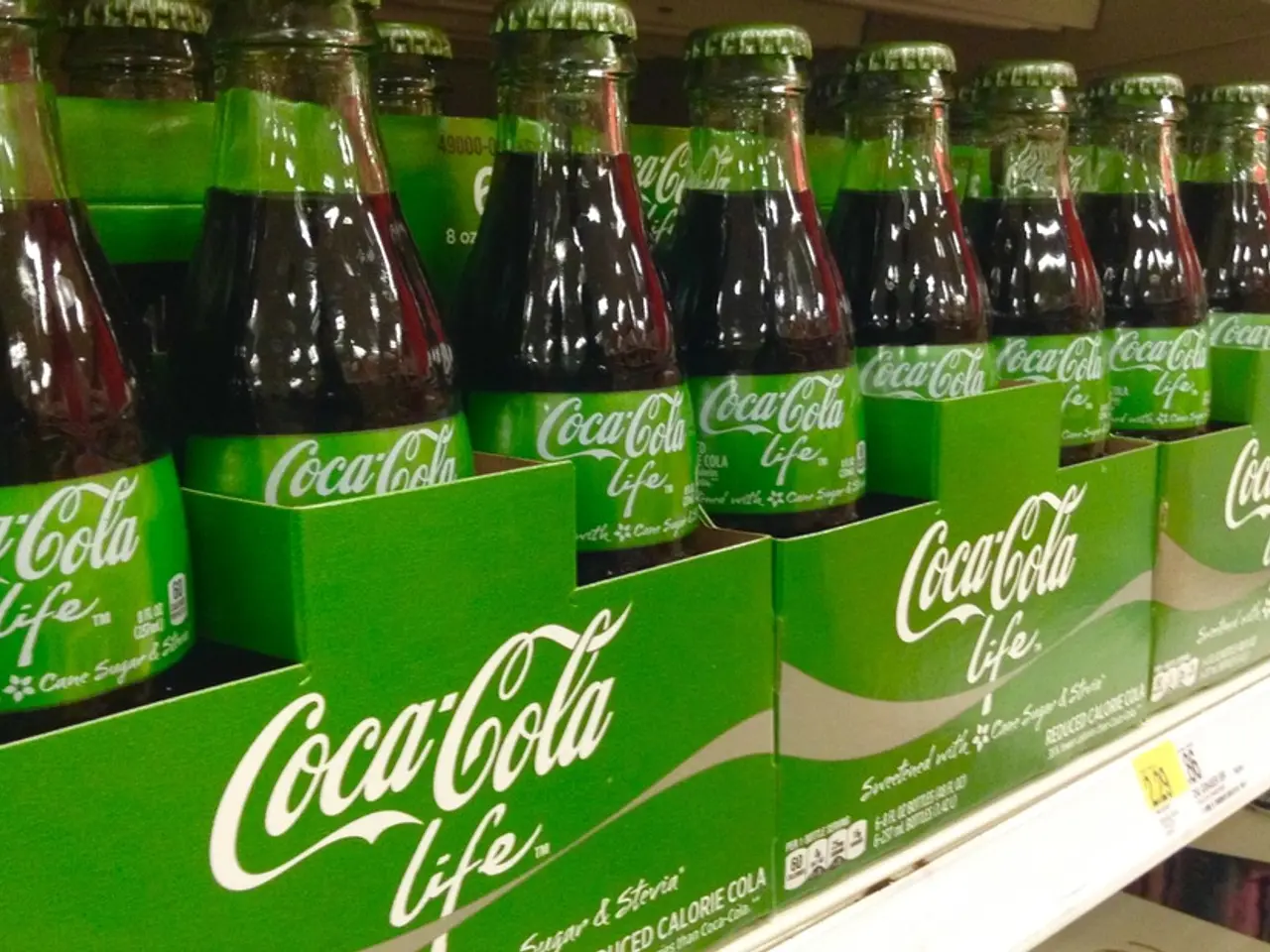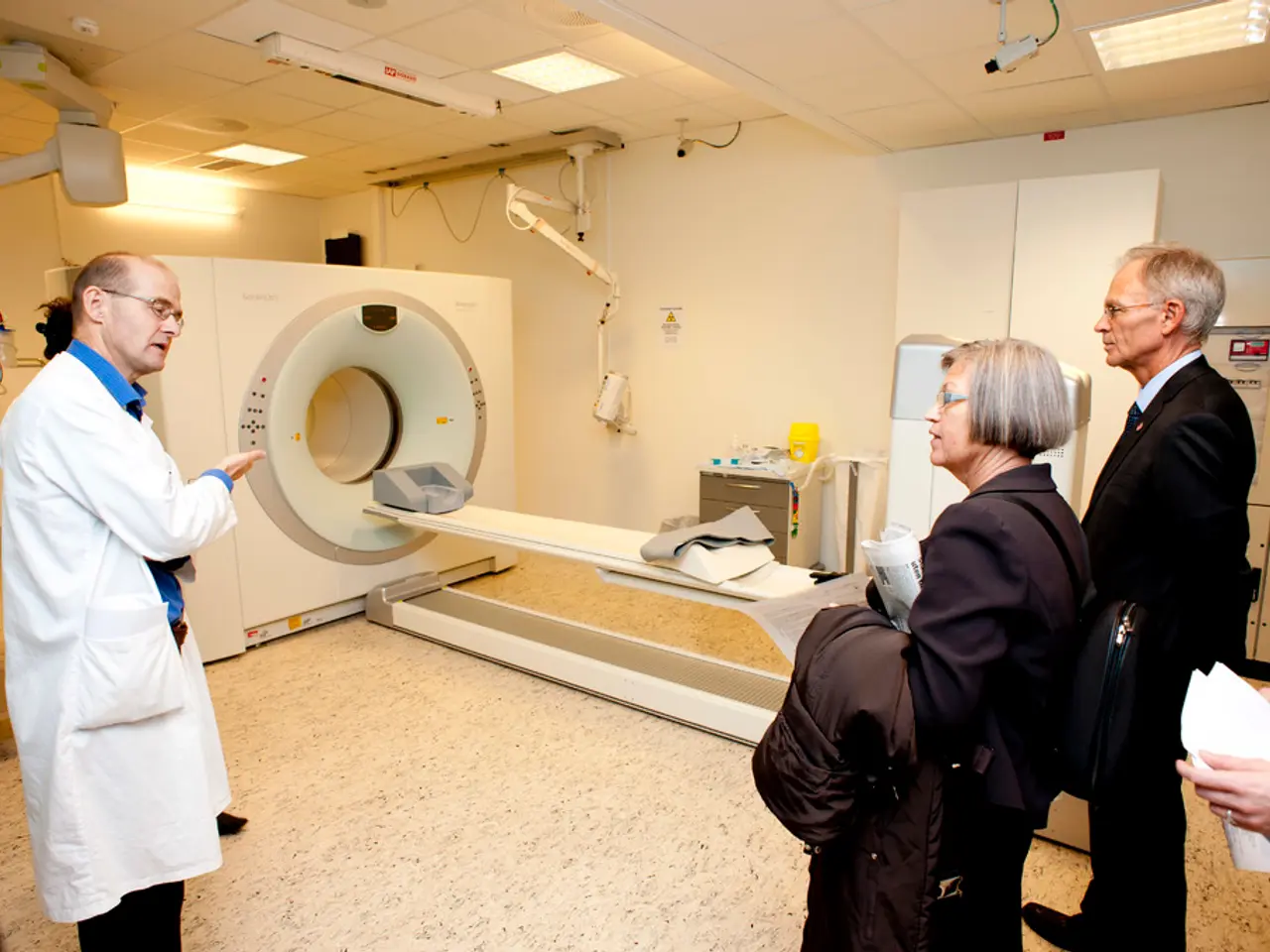The Aging Process Causes Teeth to Yellow and Methods to Reverse This Awkward Hue
In the quest for a brilliant smile, it's not just coffee, tea, and berries that contribute to faster dental aging and discoloration. A myriad of hidden factors play significant roles in the process.
During early tooth development, antibiotic use, particularly tetracycline taken between the second trimester of pregnancy and age 8, can cause permanent internal tooth discoloration. This is due to the formation of tetracycline-calcium phosphate complexes in developing teeth, resulting in yellow, brown, or gray stains[1].
Poor oral hygiene is another leading cause of dental aging and discoloration. Plaque accumulation, a result of neglecting dental care, accelerates staining and decay by promoting bacterial growth[2].
Smoking and tobacco use are significant contributors to both plaque buildup and tooth discoloration, increasing the speed of dental aging[2][4]. A high-sugar diet feeds oral bacteria, facilitating plaque formation and subsequent staining and decay[2].
As we age, our tooth enamel naturally thins, exposing the underlying dentin, which is yellower. This contributes to a natural yellowing effect over time[3]. Internal causes of discoloration, such as calcification (calcium buildup forming white, yellow, or brown patches) and internal resorption (breakdown of internal tooth structure), can lead to tooth color changes unrelated to external staining from foods or drinks[5].
Exposure to other pigmented substances like red wine and some hot beverages beyond coffee and tea can increase stain buildup[4]. Acidic beverages, energy drinks, sports drinks, and carbonated sodas temporarily soften enamel, potentially increasing the likelihood of staining[6].
However, there are solutions to combat these issues. Night guards for grinders prevent enamel wear and cracking that accelerates yellowing. Dental sealants can benefit adults by providing protective coatings on vulnerable areas[7]. Stain-removing toothpastes (without peroxide) are effective for surface stains but won't address yellowing from thinning enamel[8].
For more substantial whitening, extended professional whitening involves longer treatment periods with professionally monitored progress. Custom-fitted trays with professional gel provide 90% of in-office results at a lower cost over 1-2 weeks of home use[9]. In-office laser whitening achieves up to 8 shades lighter in a single session[10].
Medication side effects can also impact tooth color. Antipsychotics can create bluish-gray discoloration that resists conventional whitening. Mouth rinses containing chlorhexidine create brownish staining with prolonged use[11].
Remineralizing agents, containing calcium phosphate compounds, strengthen remaining enamel. Fluoride treatments strengthen enamel against acid attacks and staining. Internal bleaching is used for individual teeth darkened by trauma or root canal treatment[12].
Bonding thin areas targets the application of dental materials to mask yellowing. Microscopic enamel cracks develop naturally through decades of chewing, temperature changes, and daily life stresses. These micro-cracks create perfect hideaways for pigments and become nearly impossible to reach with standard brushing[13].
Competitive swimmers show higher rates of enamel erosion due to chlorine exposure. Acid reflux causes stomach acid to reach the mouth, eroding enamel and increasing transparency. Dentin naturally darkens from bright yellow to amber or brownish-yellow in the 60s[14].
By age 50, most people's teeth have lost nearly 40% of their enamel thickness. Enamel thinning begins in the 20s and 30s, though visible changes may not be noticeable until later. Approximately 31% of adults grind their teeth, often without realizing it[15].
These factors combined result in age-related discoloration, a combination of extrinsic stains, intrinsic changes, and structural alterations. Antihistamines reduce saliva flow by up to 40%, allowing stains to set more permanently[16].
In the professional world, a brighter smile can make a difference. Participants with whiter teeth were perceived as 58% more likely to be hired and 53% more likely to receive higher salary offers when all other qualifications were identical[17].
In conclusion, understanding these hidden factors affecting dental aging and discoloration can help individuals take proactive measures to maintain a healthy and radiant smile.
[1] https://www.ncbi.nlm.nih.gov/pmc/articles/PMC5795184/ [2] https://www.ncbi.nlm.nih.gov/books/NBK224102/ [3] https://www.ncbi.nlm.nih.gov/pmc/articles/PMC5518992/ [4] https://www.ncbi.nlm.nih.gov/pmc/articles/PMC5795184/ [5] https://www.ncbi.nlm.nih.gov/pmc/articles/PMC5518992/ [6] https://www.ncbi.nlm.nih.gov/pmc/articles/PMC6159572/ [7] https://www.ncbi.nlm.nih.gov/pmc/articles/PMC6564516/ [8] https://www.ncbi.nlm.nih.gov/pmc/articles/PMC6564516/ [9] https://www.ncbi.nlm.nih.gov/pmc/articles/PMC6564516/ [10] https://www.ncbi.nlm.nih.gov/pmc/articles/PMC6564516/ [11] https://www.ncbi.nlm.nih.gov/pmc/articles/PMC6564516/ [12] https://www.ncbi.nlm.nih.gov/pmc/articles/PMC6564516/ [13] https://www.ncbi.nlm.nih.gov/pmc/articles/PMC6564516/ [14] https://www.ncbi.nlm.nih.gov/pmc/articles/PMC6564516/ [15] https://www.ncbi.nlm.nih.gov/pmc/articles/PMC5518992/ [16] https://www.ncbi.nlm.nih.gov/pmc/articles/PMC7041396/ [17] https://www.ncbi.nlm.nih.gov/pmc/articles/PMC5795184/
In the realm of health-and-wellness, factors related to science play a significant role in dental aging and discoloration. For instance, the use of antibiotics like tetracycline during early tooth development can cause permanent internal tooth discoloration [1].
Moreover, aging itself contributes to dental changes as our tooth enamel naturally thins over time, exposing the yellower dentin beneath [3]. This natural yellowing effect can be exacerbated by several factors, making it essential to embrace science-backed solutions for maintaining a healthy and radiant smile.




